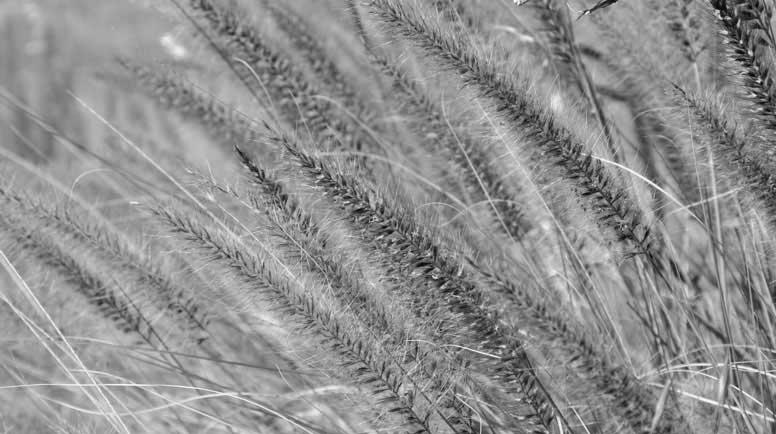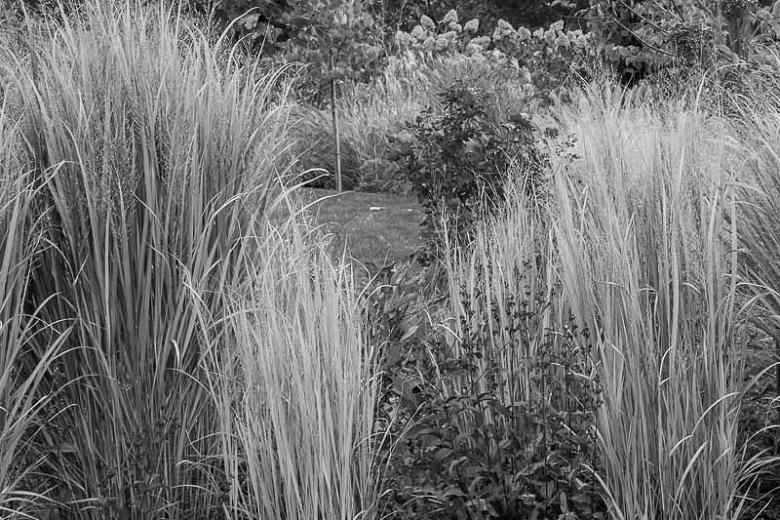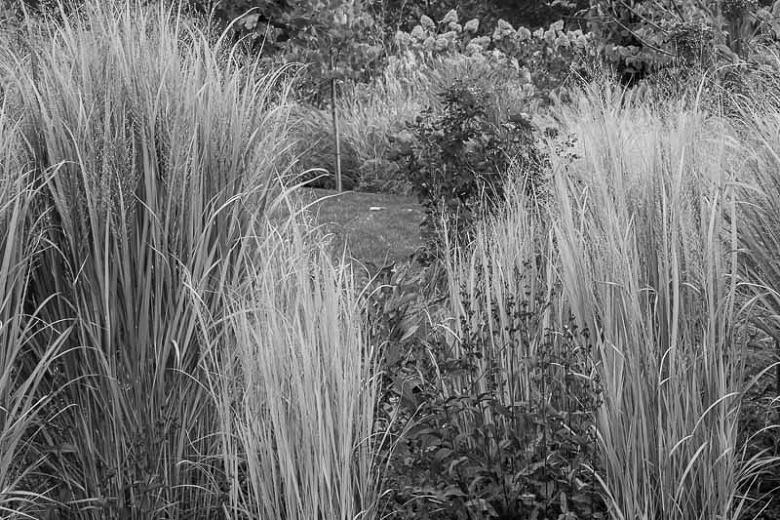Native Grasses
29, 2017
Hi,
apologies for being late, I am having issues with my server for the past couple of days.
Pictured is the Solar Eclipse close to maximum, from my vantage point in Southwest Michigan.
The high clouds made all the difference in the world, as I would not have been able to snap a few pictures with my camera.
I adjusted things so I was looking into the view finder (head down), and camera pointing up.
We were able to see it as well, as a fellow watcher was toting a welder’s helmet.
You have probably seen many pictures taken by professionals.
Awesome they were.
A few of you shared your experience, for which I am grateful.
Praying Mantis, Another one of our beneficial insects that are found around our homes and gardens this time of year.
There are native mantids and introduced, larger Asian species.
This past week was also a challenging week around here.
A screw in a tire and get a brake job right now (with no advance notice), were the least of our worries, though inconvenient.
Our little doggies got very, very sick.
First Snickers and two days later Akita.
Diarrhea, throwing up, and a fever.
Not eating or drinking, dehydration became an issue.
Catheters were inserted into a leg so our fur babies could get some liquids and a bit of nourishment.
Water was also injected under the skin, as the body absorbs it in.
We would bring our little girls home at night and return them to the animal hospital in the morning.
There was no reason to leave them over night.
No one stay to monitor the critters that stay, and why pay for overnight fees, when we can keep an eye on them at home.

Besides, sometimes home is a very healthy remedy, don’t you think?
Pictures of taped legs are below.
This week I touch on a plant subject near to me.
I prefer native plants in my wildlife habitats.
Not all plants are native, but my grasses are.
I have a fascination for American, Native Grasses.
Enjoy.
‘Native grasses of ’.
(A small clump of Sorghastrum nutans or Indiangrass in my yard.)
Most native grasses of one species or another can still be found from coast to coast.
When we think of native grasses, we often think of the American, Prairies.
You may have visions of giant herds of Bison grazing on fields of grass for as far as the the eye can see.
Maybe you picture a peaceful American Indian village, or wagon trains blazing trails.
Possibly you have read stories about children becoming lost, never to be found again.
Native grasses were an intricate part of ’s native cultures (weaved baskets and such).
Native grasses were also used to forge sod built homes, by early settlers.
Yes, the prairie holds a rightful place in American popular culture as one of our most distinctive and defining landscapes.
But, what fascinates us so about the grasslands that once girded our continent?
Other landscapes certainly offer more spectacular scenery such as mountain ranges, canyons, deserts, ocean coastlines, the everglades, or The Great Lakes.
By contrast, the prairies may seem flat and somewhat monotonous, undeniably vast but not as picturesque as The Grand Canyon, , , or a mountain stream.
, the Prairie holds us captive.
(Panicum cloud nine flower heads in my yard.)
The original tall-grass prairie comprised an area from northern Indiana, south to Texas, and north to Saskatchewan, comprising about one-third of the country.
Tall grasses like Indian grass, Switchgrass and others once dominated the landscape.
There are many other prairie grasses: little bluestem, prairie dropseed, porcupine grass, sideoats grama, needlegrass, and switchgrass.
All told, the true prairie held about 150 kinds of grasses, although no more than 10 were dominant in their special niches.
This letter isn’t about the Prairies and Great Plains, I simply like to Bring things (past and present) to light from time to time.
There are many more species of native grasses that cover and at least a few are native where you live.
No matter where you live, Australia, Europe, , Africa, or the Americas, there are native grasses
(Pink Muhly grass, or Muhlenbergia Capillaris.)

Native Grasses are ideal for the home gardens and landscapes.
I wouldn’t call it a love affair I have with native grasses.
More like a great appreciation (and growing), for our native plant life and grasses are no exception.
As a Naturalist, it is my duty to make every effort to preserve, teach and share, and even encourage others to plant or at least explore the idea of planting native.
( grasses play host for several species of butterflies.)
As a nurseryman, I should be knowledgeable, and understand the benefits of native grasses over introduced species.
Planting native is important, no matter where you live.
(Schizachyrium scoparium, bluestem)
Native grasses may not measure up to the grandeur of ‘Miscanthus, Central ’, or a few others, but native grasses offer so much to native habitats, native wildlife, and offer a certain flare that introduced species just don’t have.
Besides, beauty is in the eye of the beholder.
Native plants also handle the weather that nature throws at them.
There are American grasses for dry sites and grasses for wet locations and every type of habitat in between.
There are native grasses that grow in excess of eight feet tall (2+ meters), to as short as a few inches.
Grasses are useful in different types of landscapes ranging from formal gardens to native, plains and meadows.
Grasses add a significant vertical presence to the winter landscape and are commonly left standing until spring.
Some grasses grow best under warm temperatures (warm season) and others in cooler temperatures (cool season).
Onward…………
Grasses generally grow best in at least six hours of direct sun each day.
shade, these grasses may not bloom, are often lax and tend to fall over, and may not develop peak fall color.
Eventually they will fade away like most lawn grasses do in the shade.
Instead, you may want to look at a few varieties of ‘sedge’ for shady areas.
Pictured are just the flowers/seed heads of Turkey grass growing in my yard.
Also called Turkey Foot, or Big Bluestem.
The botanical name is ‘Andropogan gerardii’
This grass is often referred to as the Monarch of the Prairie.
Like Indiangrass, and some of the taller Panicums, Andropogan can grow 7 to 8 feet tall (2-2.5 m).
Why grasses, and why native?
Grasses are adaptable and can grow in poorer soils better than many other garden plants.
Grasses require little effort to maintain.
Grasses come in many heights, colors, textures and have varying water requirements.

Grass seed heads and foliage add fall and winter interest.
Dried grasses have many decorative uses, indoors and out.
Grasses can be used as ground covers, specimen plants, for erosion control, and as vertical design elements.
Natives are tough.
Natives have few pests.
Natives offer food and protection for the vary wildlife you want to attract.
Let’s look at a few variety of native grasses. and maybe one will be right for you.
Who knows, maybe you will find a new appreciation for these native stalwarts.
Native Grasses, look for plants of your country, state, province, or region.
Search for more detailed information and a grass that just might fill a need.
There may be one variety that interests you.
Well,, it is time for me to fly
I hope you found this letter informative.
Before I go, here is your positive thought for the week.
God Bless.
«It is wonderful to be in on the creation of something, see it used, and then walk away and smile at it».
, Former American First
God created and Saw it was very good.
I’m sure smiled too.
Then God said, «Behold, I have given you every plant yielding seed that is on the surface of all the earth, and every tree which has fruit yielding seed it shall be food for you and to every beast of the earth and to every bird of the sky and to every thing that moves on the earth which has life, I have given every green plant for food» and it was so. God saw all that had made, and behold, it was very good.
1 29-31
«Treat the earth well:
It was not given to you by your parents,
It was loaned to you by your children.
We do not inherit the Earth from our
Ancestors, we borrow it from our Children.»
Ancient Indian Proverb.
Your friend indeed,
PS. If you enjoy these letters, please forward them to friends, family and co-workers.
Better yet, have them sign up so they can receive their own letters.
Gardening For Wildlife.
